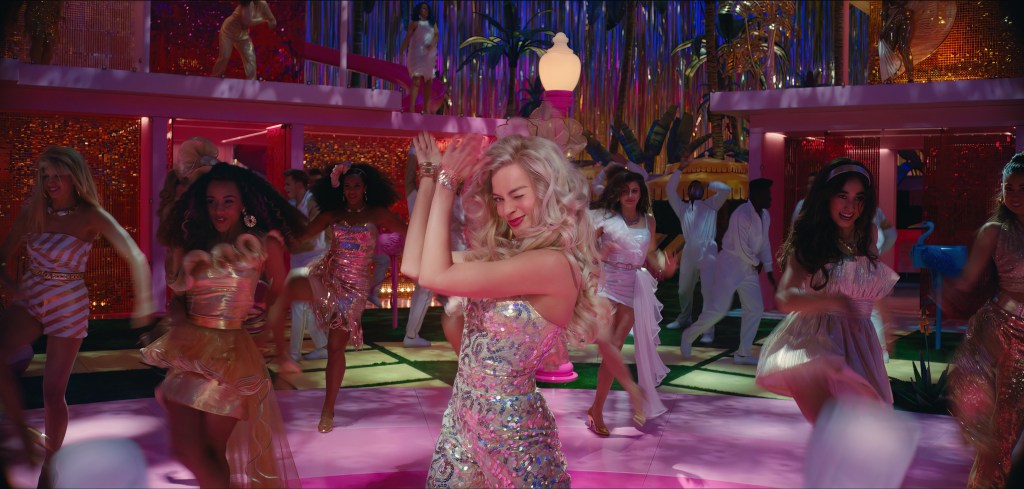In Greta Gerwig’s “Barbie,” Margot Robbie’s Stereotypical Barbie’s perfectly pink world is rocked to the core when she has an existential crisis during a dance party. What follows is a sequence of events that propel her into an emotional journey as she begins to grow closer to the real world.
“It was important that her evolution into becoming human could be reflected in the hair, makeup and costumes,” says Robbie, who also served as the film’s producer. “So, we started mapping her emotional and physical journey through that.”

Makeup and hairstylist Ivana Primorac used 18 wigs and 30 hair pieces for Robbie to reflect her transformation. Primorac worked closely with costume designer Jacqueline Durran, discussing how that visual shift would take place. Barbie’s “a-ha moment” comes when she lies on the ground feeling “defeated, overwhelmed and hopeless.”
That was where the volume in her hair could change. “Jacqueline thought that her skirt completely deflated and the colors on it would be washed out. That was a moment for me to make the hair a normal volume,” Primorac explains, as both she and Durran started to tone down her hair and outfits. “She can’t suddenly go through all those emotions and go through everything she’s going through without those changes.”
When it came to framing, cinematographer Rodrigo Prieto conveyed Barbie’s self-deprecating thoughts through “simple” techniques.
“As Barbie starts her existential crisis, the camera is still innocent,” he explains. “We have these signature shots of her waking up: She stretches, and the camera frames for that. Even when she doesn’t wake up, the camera still does the same move, the routine goes on and it’s perfect, but she doesn’t wake up [and] the camera doesn’t know that.”
“When she flies off the roof of the house onto the car, the camera doesn’t know that she’s going to fall this time,” he continues. “So we start doing the exact same move and she falls out of frame.”

Warner Bros.
The VFX team at Framestore built a detailed Barbieland through miniatures, scanning them digitally. “Techniques don’t get used that often anymore, but it was all Greta’s idea,” Robbie explains. The miniature world helped VFX build backdrops and create set extensions that blended seamlessly with the film.
Production designer Sarah Greenwood and set decorator Katie Spencer built 360-degree sets for Barbieland on soundstages in the U.K. The props department designed everything by hand, from Barbie’s toothbrush to her hair. They had to play with scale, since everything Spencer and Greenwood desgined was “off-kilter and reduced by 23%” to make Robbie, Ryan Gosling and the other actors appear doll-like.
Their colors were pink, white, blue and pastel. It wasn’t until Ken took over that darker colors were introduced, and, as Greenwood says, “We pushed the ugliness.”
Adds Spencer, “He has brought everything back from the real world. In Barbieland, there’s no white or black or chrome, and Ken has lots of that because he brings … a kind of ugly to it.”
By the time Barbie transforms into being a human, her fabrics and patterns have changed. “Even the jewelry she has is delicate,” says Gerwig. But one color would remain through to the end. “We wanted the Birkenstock at the end to still be pink — because she’s still Barbie.”
Read More: World News | Entertainment News | Celeb News
247
